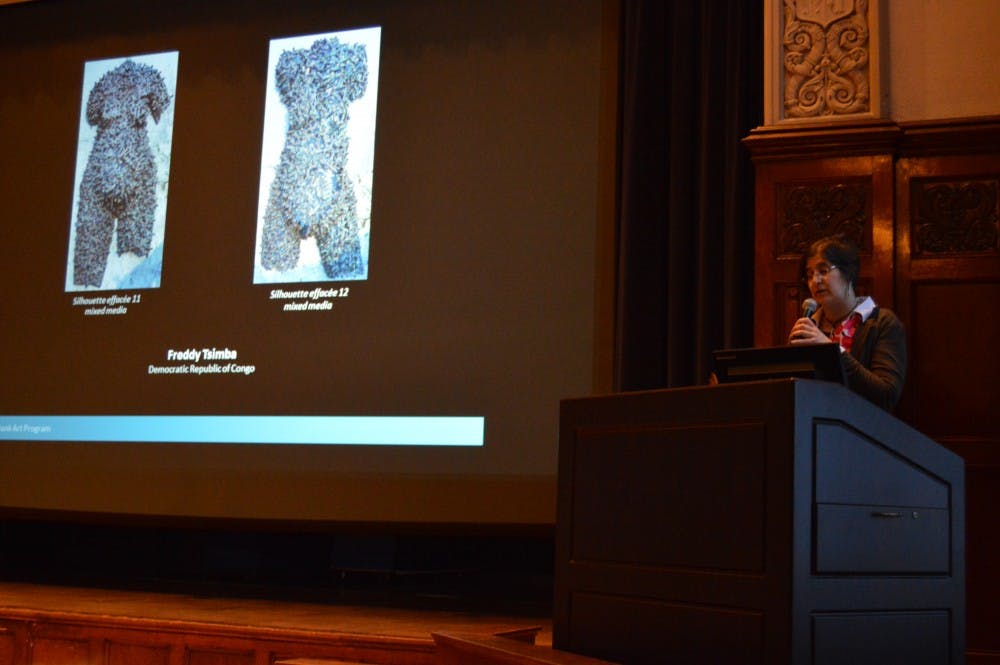The exhibit is open at the David Owsley Museum of Art until May 8.
More than one in three women around the world are beaten, coerced into sex or otherwise abused during their lifetimes, according to the World Health Organization.
This global issue of gender-based violence is being portrayed through an art exhibit in the David Owsley Museum of Art.
The contemporary art exhibition, "1 in 3: What Does It Take for You To Be Outraged?" from the World Bank Art Program, brings the alarming statistic to life in a way to raise awareness.
“This is a sensitive topic to talk about, but it’s important,” said Robert La Frace, David Owsley Museum of Art director. “I think by bringing a show about gender-based violence here to this museum, we are telling people we are not afraid and we are not going to hide it. This is a problem that we need to address.”
The exhibition, which opened Jan. 21, displays about 80 photographs, paintings, sculptures and videos created by 20 international contemporary artists. All of the art directly confronts the issue of gender-based violence, according to bsu.edu.
Marina Galvani, economist and curator of the World Bank Art program, spoke on Feb. 16 to discuss the concept behind the exhibit and how artists and the World Bank are addressing this societal issue and promoting change.
“This is a global problem,” Galvani said. “This is not a problem just in governed countries, in poor countries or of different specific cultures. This is global.”
Every year, millions of women and girls worldwide suffer violence, whether it be domestic violence, rape, female genital mutilation/cutting, dowry-related killing, trafficking, sexual violence in conflict-related situations or other manifestations of abuse, according to the United Nations.
Violence against women is not confined to a specific culture, region or country, or to particular groups of women within a society, according to the United Nations. The roots of violence against women lies in historically unequal power relations between men and women, and persistent discrimination against women.
Galvani spent years traveling the globe, collecting thousands of works of art to expose the issue of gender based violence in countries worldwide — from Pakistan, Thailand and Egypt to Brazil and Russia — that would be featured in the exhibit.
This journey was not an easy one, as Galvani and the World Bank Art Program had to negotiate and challenge the norms and images of countries like India, where marital rape is legal.
“My colleagues in the beginning of all of this were telling me that everything I was getting into was adding 'another nail in the coffin' — my professional coffin,” Galvani said. “But I was so passionate about this topic that I couldn’t stop and go back.”
Galvani said the goal behind creating this exhibit is to challenge people and promote awareness.
“Worldwide we have a huge problem with the tolerance in violence, specifically within the younger generation,” Galvani said. “It is important to address this issue and have people listen.”
Galvani encouraged students who have not already visited the exhibit to do so before it closes on May 8.
“Students and the youth are the changers of the world,” Galvani said. “I want you to go into the work force and advance in your life and career. I want you to think about these types of things, understand they are real issues and makes decisions that can possibly bring change.”
To learn more about the exhibit visit www.bsu.edu/artmuseum to find a list of upcoming events with the museum exhibit.





